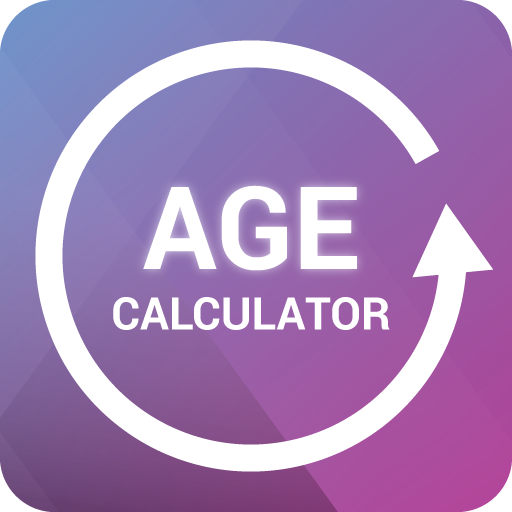
Age Calculator
1.Unlocking Time: A Comprehensive Look at the Age Calculator
In an increasingly data-driven world, knowing one’s age down to the exact year, month, day, and even minute, has become more than just a matter of curiosity. Age calculators, once simple tools, have evolved into sophisticated instruments offering detailed insights into the passage of time. Far beyond just telling you how many birthdays you’ve celebrated, these digital utilities, particularly a good Current Age Calculator, offer a fascinating breakdown of existence, serving a myriad of practical and personal purposes.
At its core, an age calculator is a straightforward application that determines the duration between two specified dates. Typically, these dates are a person’s date of birth and the current date (or any other specified future or past date). The magic lies in its ability to translate this simple time difference into various digestible units, offering perspectives that a quick mental calculation cannot. Utilizing a Current Age Calculator provides immediate and precise results.
2.The Mechanics Behind the Magic
While the user interface of an age calculator might appear simple—often just two date input fields and a “Calculate” button—the underlying logic involves precise date-time arithmetic. Most modern age calculators, including any reliable Current Age Calculator, leverage robust programming functions that handle complexities such as leap years, varying month lengths, and even time zone differences (though often simplified for general use).
The calculation typically proceeds by:
Capturing Dates: Inputting the “Date of Birth” (DOB) and a “Target Date” (usually today, but can be customized).
Calculating Difference: Determining the total time interval between these two dates.
Breaking Down Time: Converting this interval into a human-readable format. This is where the versatility of an age calculator truly shines, especially a comprehensive Current Age Calculator.
3.Beyond Years: Diverse Age Units
A basic age calculator might only provide your age in full years. However, advanced versions, like the reliable Current Age Calculator we’ve discussed, go much further, offering a granular breakdown:
Exact Years (Decimal): Providing your age as a decimal number (e.g., 30.094 years) offers a precise, continuous representation of your age, useful for scientific or statistical contexts.
Years, Months, Days: The most common and intuitive format (e.g., “30 years, 1 month, 4 days”). This breaks down the age into the largest whole units, reflecting calendar progression.
Total Months and Days: This view (e.g., “361 months, 4 days”) summarizes your age predominantly in months, highlighting a different perspective on time’s passage.
Weeks and Days: For those who track time in shorter cycles (e.g., “1570 weeks, 3 days”), this format provides a clear weekly count. This is particularly useful for tracking pregnancy, project durations, or even just appreciating the cumulative number of weeks lived.
Total Days: A simple yet profound number (e.g., “10,993 days”) representing the total number of days between the two dates. This raw count often puts the span of one’s life into a stark, tangible perspective.
Approximate Higher Units (Hours, Minutes, Seconds): While these are often approximations (due to complexities like daylight saving time changes and the precise definition of a “day” across different time zones), they offer a massive, almost overwhelming scale of time lived (e.g., “263,832 hours*”, “15,829,920 minutes*”, “949,795,200 seconds*”). These figures are excellent for illustrating the sheer volume of time, prompting reflection on how it’s spent.
4.Why Are Age Calculators So Popular?
The utility of age calculators, especially a precise Current Age Calculator, extends beyond mere novelty:
Personal Curiosity: The most common reason. People simply want to know their exact age or the age difference between themselves and others.
Event Planning: Calculating time till a future event (e.g., how many days until a wedding, retirement, or a major milestone).
Legal & Administrative Purposes: Determining eligibility for voting, driving licenses, retirement benefits, or specific legal contracts that have age restrictions.
Medical & Health Records: Age calculation is crucial in medical contexts for dosages, developmental milestones, and tracking patient history.
Research & Statistics: For demographic studies, sociological research, or any field requiring precise age data.
Nostalgia & Milestones: Understanding exactly how long ago a significant event occurred, such as how many weeks since a child was born or a major historical event took place.
5.The Modern Age Calculator: Mobile-Friendly and Visually Engaging
Today’s age calculators are not just functional; they are also designed with user experience in mind. Mobile responsiveness is paramount, ensuring the tool is accessible and easy to use on smartphones and tablets. Furthermore, thoughtful design elements, such as the use of vibrant colors inspired by national symbols (like the Indian tricolor), can make the tool more engaging and culturally relevant. These visual cues add a touch of personality and familiarity, enhancing the overall user experience.
In conclusion, the age calculator is a simple yet powerful tool. A Current Age Calculator transforms dates into meaningful numbers, offering perspectives on time that range from precise decimal years to vast numbers of seconds. Whether for practical needs, personal reflection, or sheer curiosity, it continues to be a valuable and engaging utility in our digital lives.